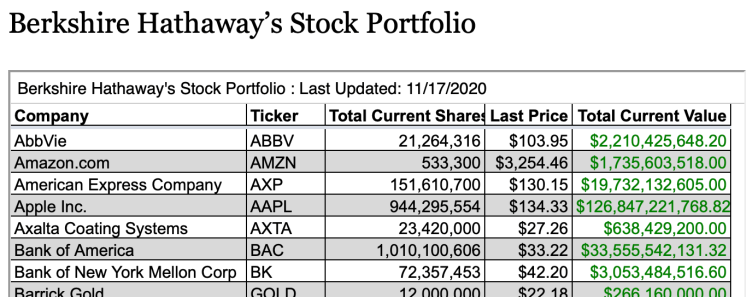
ESG REITs can be used to invest in companies which are both socially and environmentally conscious. They are becoming a popular choice for both millennials and institutional investors. These funds are making a real difference in the global economy.
ESG REITs invest only in real estate properties that have good governance and are environmentally and socially responsible. ESG REITs also help to clean up areas that are polluted and create jobs for residents. These funds may own offices, retail stores, residential units or warehousing, as well as healthcare facilities.
Investors should look into the performance of an ESG REIT before putting their money in it. You should consider many factors, including the fees, governance policies, and overall performance. You might also consider consulting a financial advisor. For example, if you are a Muslim investor, you may want to be sure that your investments are in line with Islamic law.

ESG REITs score well for energy efficiency and tenant turnover. This helps to reduce energy consumption. Moreover, they have strong community involvement, which is a sign of good governance.
ESG REITs have the potential to play a crucial role in helping address climate change. A recent study found that more than half of institutional investors believe climate change management is a key component to the success of their portfolio companies. There are also increasing numbers of REITs forming interdepartmental ESG commissions made up of employees from different levels.
ESG REITs have many investment options. You should choose wisely. These funds can have bad records so you need to ensure that your investment aligns with your values. If you're not sure which type of fund is right for you, you can get assistance from an advisor.
An ESG strategy that is effective should take into account the building's materials as well as emergency planning. It should also consider the needs and wants of the occupants. There are several benchmarks at the asset level for ESG, including impact on the community, health and wellbeing, waste generation, and GHG emissions. The ESG REIT's performance should also be compared to other ESG REITs within the same industry.

One example of an ESG REIT is Equinix. The company has an ambitious goal to become carbon neutral by 2030. Its market cap currently stands at $60 billion. The company's price-to-earnings ratio, however, is higher than the average. It does offer a 1.9% dividend yield.
A REIT, or equity REIT, is another way to invest in real estate funds. This allows you the opportunity to own commercial properties, which have the potential to rise in value. Another option is a mortgage REIT, which provides you with exposure to interest rates.
ESG funds are a good option for those who are interested in investing into real estate investment funds. These funds can provide liquidity and diversification for intermediate investors and help you to achieve a balanced return/risk profile.
FAQ
How are share prices established?
Investors set the share price because they want to earn a return on their investment. They want to make a profit from the company. They buy shares at a fixed price. The investor will make more profit if shares go up. If the share value falls, the investor loses his money.
The main aim of an investor is to make as much money as possible. This is why they invest into companies. They can make lots of money.
Why is marketable security important?
An investment company's main goal is to generate income through investments. It does this by investing its assets in various types of financial instruments such as stocks, bonds, and other securities. These securities offer investors attractive characteristics. They may be safe because they are backed with the full faith of the issuer.
A security's "marketability" is its most important attribute. This refers to the ease with which the security is traded on the stock market. You cannot buy and sell securities that aren't marketable freely. Instead, you must have them purchased through a broker who charges a commission.
Marketable securities are government and corporate bonds, preferred stock, common stocks and convertible debentures.
These securities are a source of higher profits for investment companies than shares or equities.
Are stocks a marketable security?
Stock can be used to invest in company shares. This is done by a brokerage, where you can purchase stocks or bonds.
You could also invest directly in individual stocks or even mutual funds. In fact, there are more than 50,000 mutual fund options out there.
There is one major difference between the two: how you make money. With direct investment, you earn income from dividends paid by the company, while with stock trading, you actually trade stocks or bonds in order to profit.
In both cases you're buying ownership of a corporation or business. However, if you own a percentage of a company you are a shareholder. The company's earnings determine how much you get dividends.
With stock trading, you can either short-sell (borrow) a share of stock and hope its price drops below your cost, or you can go long-term and hold onto the shares hoping the value increases.
There are three types for stock trades. They are called, put and exchange-traded. You can buy or sell stock at a specific price and within a certain time frame with call and put options. ETFs are similar to mutual funds, except that they track a group of stocks and not individual securities.
Stock trading is very popular because investors can participate in the growth of a business without having to manage daily operations.
Stock trading can be a difficult job that requires extensive planning and study. However, it can bring you great returns if done well. It is important to have a solid understanding of economics, finance, and accounting before you can pursue this career.
Why is a stock security?
Security is an investment instrument that's value depends on another company. It may be issued by a corporation (e.g., shares), government (e.g., bonds), or other entity (e.g., preferred stocks). If the underlying asset loses its value, the issuer may promise to pay dividends to shareholders or repay creditors' debt obligations.
Statistics
- US resident who opens a new IBKR Pro individual or joint account receives a 0.25% rate reduction on margin loans. (nerdwallet.com)
- For instance, an individual or entity that owns 100,000 shares of a company with one million outstanding shares would have a 10% ownership stake. (investopedia.com)
- Our focus on Main Street investors reflects the fact that American households own $38 trillion worth of equities, more than 59 percent of the U.S. equity market either directly or indirectly through mutual funds, retirement accounts, and other investments. (sec.gov)
- "If all of your money's in one stock, you could potentially lose 50% of it overnight," Moore says. (nerdwallet.com)
External Links
How To
How to Invest Online in Stock Market
You can make money by investing in stocks. There are many options for investing in stocks, such as mutual funds, exchange traded funds (ETFs), and hedge funds. Your investment strategy will depend on your financial goals, risk tolerance, investment style, knowledge of the market, and overall market knowledge.
Understanding the market is key to success in the stock market. Understanding the market and its potential rewards is essential. Once you understand your goals for your portfolio, you can look into which investment type would be best.
There are three main types of investments: equity and fixed income. Equity is the ownership of shares in companies. Fixed income refers debt instruments like bonds, treasury bill and other securities. Alternatives include things like commodities, currencies, real estate, private equity, and venture capital. Each option comes with its own pros and con, so you'll have to decide which one works best for you.
Once you figure out what kind of investment you want, there are two broad strategies you can use. One strategy is called "buy-and-hold." You purchase a portion of the security and don't let go until you die or retire. The second strategy is called "diversification." Diversification involves buying several securities from different classes. You could diversify by buying 10% each of Apple and Microsoft or General Motors. Multiplying your investments will give you more exposure to many sectors of the economy. Because you own another asset in another sector, it helps to protect against losses in that sector.
Risk management is another key aspect when selecting an investment. Risk management is a way to manage the volatility in your portfolio. A low-risk fund would be the best option for you if you only want to take on a 1 percent risk. However, if a 5% risk is acceptable, you might choose a higher-risk option.
Learning how to manage your money is the final step towards becoming a successful investor. The final step in becoming a successful investor is to learn how to manage your money. A good plan should cover your short-term goals, medium-term goals, long-term goals, and retirement planning. That plan must be followed! Don't get distracted by day-to-day fluctuations in the market. Keep to your plan and you will see your wealth grow.